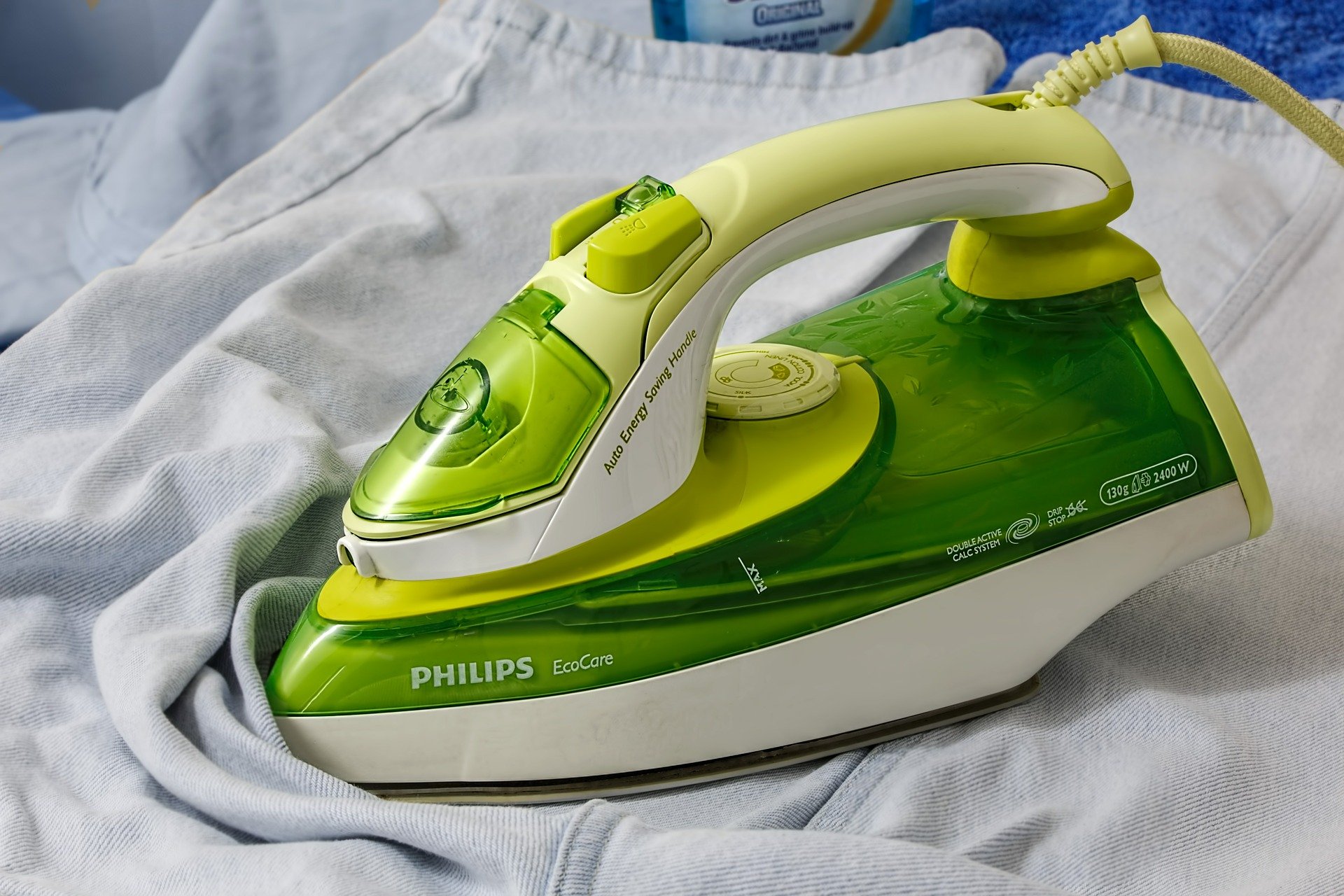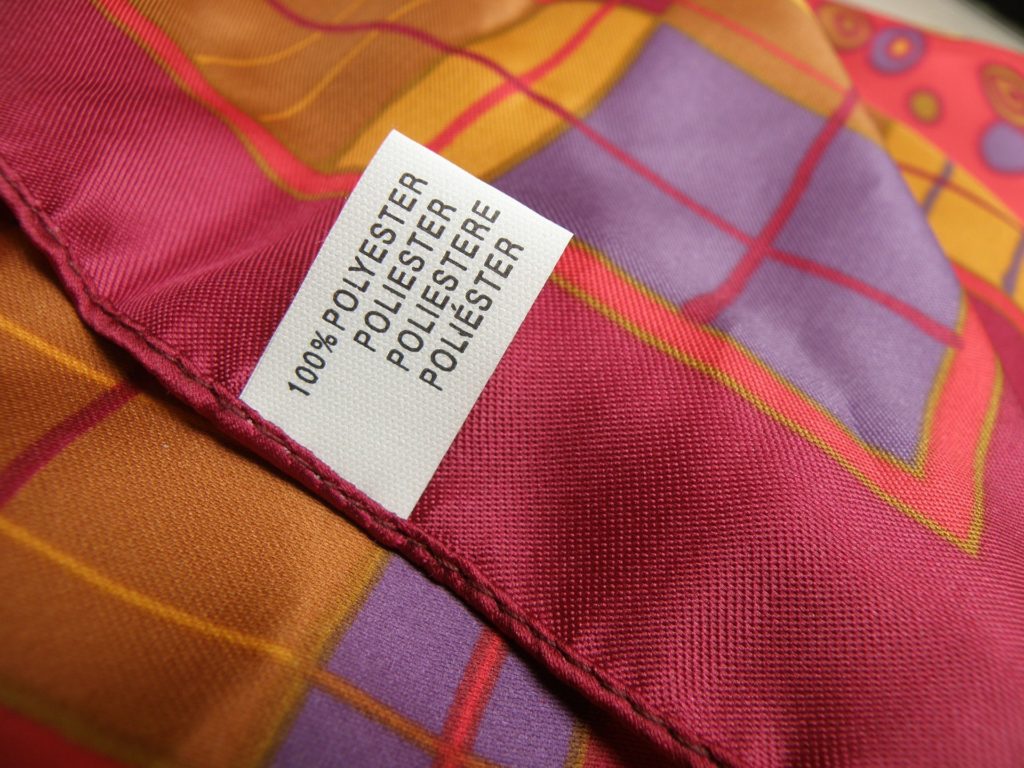Have you ever experienced discoloring white clothes in the wash, shrinking fabrics in the dryer, or accidentally burning clothes while trying to iron them? You’re not alone. When there are so many types of fabric in the market, it can get confusing trying to remember the special instructions for each of the fabric types.
Polyester is a common choice for manufacturers making clothes and other fabric-based products. Sometimes, it is used on its own, while in other instances, it is used as a blend with other fabrics. To understand how to properly wash and dry polyester, here’s everything you need to know about it.
What Is Polyester Fabric?
Unlike other fabrics such as silk or wool, polyester is a man-made fabric. It’s made with polyester fibers, which are synthetic polymers made out of a plastic known as polyethylene terephthalate (PET). PET is made with ethylene glycol and terephthalic acid. In short, polyester is a mixture of yarns and plastic materials.

Polyester was first invented in 1941. Two British chemists named John Rex Whinfield and James Tennant Dickson created the polyester blend, which was then advertised in the 1970’s as a “miracle fiber” that could withstand the regular wear, tear, and sweat absorption of regular clothes for up to 68 days without creasing or dirtying. While this is a questionable claim, given that this was post-World War II era where people lived knowing shortages, clothes that didn’t require washing, drying, and ironing without sacrificing personal hygiene seemed like such a good deal at the time.
Because polyester was made of plastic, the first polyester-based clothes resembled the loud and shiny characteristics of everyday plastics. The downside was that it looked like cheap fabric, but today, polyester is used for high-end sportswear and different types of clothing articles.
You can tell an item of clothing has polyester if it’s very durable and resistant to shrinking or stretching, compared to other fabrics. Because of its plastic composition, it is resistant to wrinkling and doesn’t need to be ironed. Despite the thick material, it is very lightweight and can be dyed, depending on the color of the shirt and the type of dye used. And since plastic does not easily absorb water, it takes shorter time to dry. However, it can absorb oils and the dirt trapped in oils, and if not washed properly, it can trap the oils inside and make the shirt smell bad even if newly washed.
Aside from clothes polyester fabrics were sewn onto furniture, used as textiles for tablecloths, blankets, and other materials. Today, it is often blended with other fabrics. If you look at the tags of some of your clothes, you can see how much polyester an item of clothing has. Be warned, though, that this may be used by some manufacturers as a filler. Cashmere sweaters, for example, are relatively expensive. But if they market it as a cashmere sweater but the composition is like 99 percent polyester and 1 percent cashmere, then they’re selling you short.
Washing Polyester
Polyester fabrics are durable, but if washed improperly, it can trap dirt and hold oil stains. White polyester fabrics may even fade to a yellow color if washed improperly for a long time. Polyester can be dry-cleaned, hand-washed, or machine-washed.
Before placing polyester clothes in the washing machine, turn it inside out so that you can avoid outer decorations from tangling with other clothes. Use cold or warm water, depending on the polyester blend or the other types of clothes in the wash. If your polyester clothes have a certain smell, though, you might want to use warm water to get rid of any oil that might be trapped.

Use an all-purpose detergent. Using chlorine bleach can make white fabrics even whiter, but follow your bleach manufacturer’s instructions to avoid discoloration or use only when necessary. To safely whiten polyester, soak it overnight in half a cup of dish washing soap in a gallon of warm water. Use a fabric softener to lessen the static that comes from the plastic components.
Do not overload your washer as you want your clothes to move freely. Overloading your washer can make your polyester crease when it comes out.
Drying Polyester
After washing, tumble-dry at a low temperature setting. Or, if you’re going to hang your clothes, leave it under the sun until it dries. Do not use a higher temperature setting at longer times or leave it under the sun even after it is completely dry as this can make your polyester shrink. After drying, hang your clothes on a hanger so that the remaining wrinkles can relax and soften.

Polyester won’t crease or have wrinkles once dry, but if you want to iron it, use a medium temperature. If you want to be safe, steam-press your clothes.
Should You Be Using Polyester Fabrics for Clothes?
Polyester is relatively affordable compared to other fabrics, and are the popular choice for clothes that involves high heat, high-activity, and plenty of dirt, such as sports attire. This is also ideal for fashion designers and manufacturers who want to add permanent pleats onto their designs.

The downside of polyester is that it builds up on static, especially garments that are pure polyester. To address this, some manufacturers blend other fabrics and fibers into polyester to get rid of the static shock. If you can still feel it, you can reduce the amount of static the fabric collects by adding fabric softener to your washing.
Downsides of Polyester
However, just because it’s woven into a fabric, polyester is still a plastic. And manufacturing plastic is still harmful for the environment. A group of researchers from Plymouth University found that an average 6-kilogram load released around 496,000 fibers of polyester, which contributes to the microplastics pollution. Compared to regular plastic waste like straws and bottles, microplastics are smaller and harder to filter out from water.
And because polyesters are made of plastic, it is made from non-renewable petroleum, contributing to the carbon pollution every year. Around 70 million barrels of petroleum are used to make polyester fabric every year, and it takes over 200 years for polyester to decompose.
Washed and dried right, polyester clothes can last you a long time. Although we don’t recommend you wearing your clothes for 68 days straight, polyester is durable, breathable, and can provide you with clothes that don’t crease. But if you’re going to support polyester clothing, make sure you conserve and wash your clothes properly to lessen the pollution polyester fabric creates.











